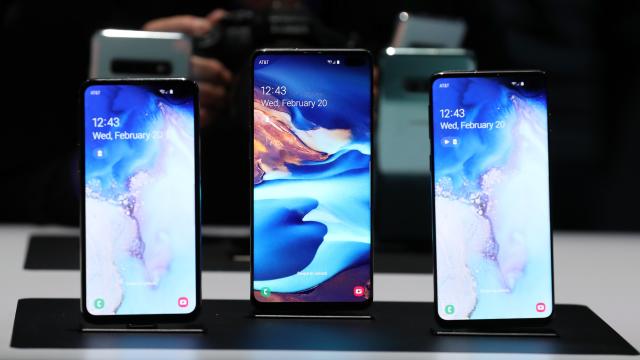Nobody likes waiting for stuff to load on their phone. Whether it’s blank webpages or streaming sites buffering, we look to our handheld computers for an instant connection and instant gratification, and it’s just so annoying when they fail us—or take forever to load a silly video.
We often attribute a device’s speeds to internet service providers, mobile carriers, and that little “bars” icon at the top of the device, rather than the phone’s hardware. While that’s a reasonable way to think about it, the phone itself is a factor. Remember AntennaGate with the iPhone 4? The position and design of the phone’s “bezel gap” antenna made it harder for it to connect when you held it in your hand.
Now — at least, for the moment — we have a solid ruling on which phones do the best job connecting and maintaining a great 4G connection. According to a series of tests run by popular independent internet speedtest purveyor Ookla, published by sister site PCMag, the fastest 4G smartphone is Samsung’s newest high-end flagship phone, the Galaxy S10+. The distinction is based on a study from Ookla’s enterprise metrics service, Speedtest Intelligence, which used crowdsourced data to evaluate the 4G download speeds today’s mainstream devices.
Ookla tested Samsung’s Galaxy S8+, S9+, S10+ and Note 9; Google’s Pixel 3, LG’s V40, and the iPhone XS Max. According to the data, the Galaxy S10+ and LG V40 were pretty much neck-and-neck with mean download speeds of 54 Mbps and 52 Mbps respectively, followed by the Galaxy S9+ and Note 9 at 47 Mbps and 45 Mbps. The iPhone XS Max and Galaxy S8+ hovered at 41 Mb/s, and the Pixel 3 averaged 39 Mbps.
Why does the S10+ stand apart from the rest of the pack? PCMag noted that the modem in the S10+ is newer and likely has a better RF setup, which enhances connectivity and performance.
Interestingly, PCMag ran a second, anecdotal test with the Galaxy S+ phones and iPhone XS Max and found similar results—the S10+ was faster and the others were tied, but not by a wide margin.
It’s worth noting that these tests were conducted in the US and may not necessarily translate to Australian networks, which use different frequency bands. On the other hand, an effective mobile antenna is an effective mobile antenna.
In any event, there are lots of other factors that affect your download speeds moment-to-moment, including your distance from a tower for your carrier and what apps you’re running in the background of your phone. I find it’s nice to have this kind of data as general reference, but avoid relying on it and, more importantly, using it to set expectations.

Comments